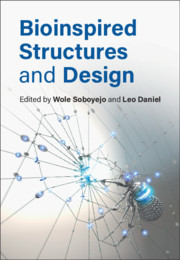Book contents
- Bioinspired Structures and Design
- Bioinspired Structures and Design
- Copyright page
- Contents
- Contributors
- Preface
- Part I Materials
- Part II Structures
- Part III Natural Phenomena
- 10 Aquatic Animals Operating at High Reynolds Numbers
- 11 Flying of Insects
- 12 Designing Nature-Inspired Liquid-Repellent Surfaces
- 13 Biomimetic and Soft Robotics
- 14 Bioinspired Building Envelopes
- Index
- References
11 - Flying of Insects
from Part III - Natural Phenomena
Published online by Cambridge University Press: 28 August 2020
- Bioinspired Structures and Design
- Bioinspired Structures and Design
- Copyright page
- Contents
- Contributors
- Preface
- Part I Materials
- Part II Structures
- Part III Natural Phenomena
- 10 Aquatic Animals Operating at High Reynolds Numbers
- 11 Flying of Insects
- 12 Designing Nature-Inspired Liquid-Repellent Surfaces
- 13 Biomimetic and Soft Robotics
- 14 Bioinspired Building Envelopes
- Index
- References
Summary
The abundance of flying insects in nature may make them seem ordinary to most of us. However, for approximately 350 million years [1], flying insects have been experimenting successfully with various aspects of flight, including aerodynamics [2,3], wing design [4], sensors [5,6], and flight control [7–9]. As a result, they have developed miniaturized flight apparatus and efficient computation architectures for executing aerobatic feats that are not yet emulated in engineering flight (Figure 11.1). This makes flying insects truly extraordinary small-scale aircraft from nature, and their design and working principles have received wide interest in both engineering and biology communities.
- Type
- Chapter
- Information
- Bioinspired Structures and Design , pp. 271 - 299Publisher: Cambridge University PressPrint publication year: 2020
References
- 5
- Cited by



